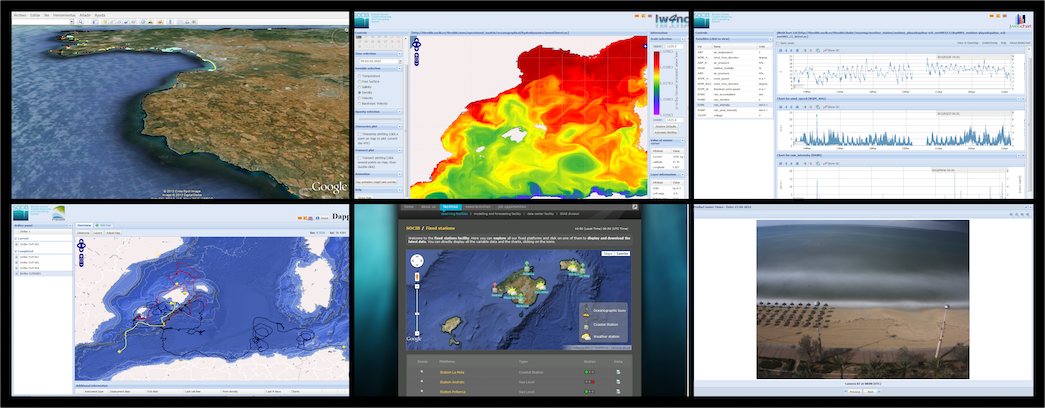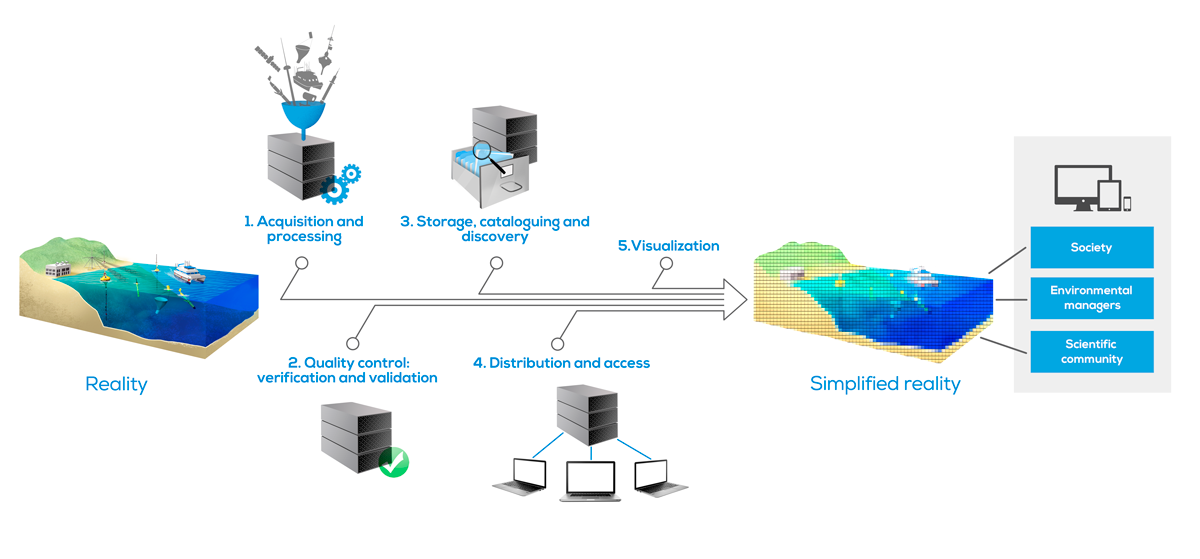SOCIB DATA CENTRE
The SOCIB Data Centre aims to provide an information system which enables users to visualize and access the data with ease, it provides free open access to multidisciplinary data.

The main data managed by SOCIB comes from its own observation platforms (coastal radars, underwater gliders, buoys…). The Data Centre processes information from other sources such as numerical models and data from external providers, in the same way.
They all generate and transcribe different types of data, from numerical simulation grids to trajectories or time series of data. Processing all this data involves managing processes of standardization and conversion of formats as well as quality controls and data validation, following international standards.
Once these quality controls have been passed, the data is stored on the SOCIB servers. Distribution and access to data is achieved through web services. Thanks to these, users can download data and visualize it through applications developed by the SOCIB data centre.

These applications are directed at different user profiles, some are intended to cover the needs of scientific research, whilst others offer a more general view orientated at bodies responsible for environmental management as well as the general public interested in the Balearic sea state in real-time.
THE DATA MANAGEMENT PROCESS
The data management process has various stages:
Acquisition: all the data from the different observation platforms is compiled, accounting for the wide variety of data entry formats.
Processing: Processes of standardization and format conversion are applied. The data is submitted to exhaustive quality controls and is validated. Metadata is inserted to facilitate subsequent searches.
Storage: data is stored in a data file system.
Distribution and access: thanks to the web services users can download the data and visualize it through various different applications which allow the data to become integrated to the applications of the SOCIB Data Centre or by third parties.
Cataloging and detection: all the information is incorporated to a single data cataloging service.
Visualization: the data can be presented openly via web viewers.

